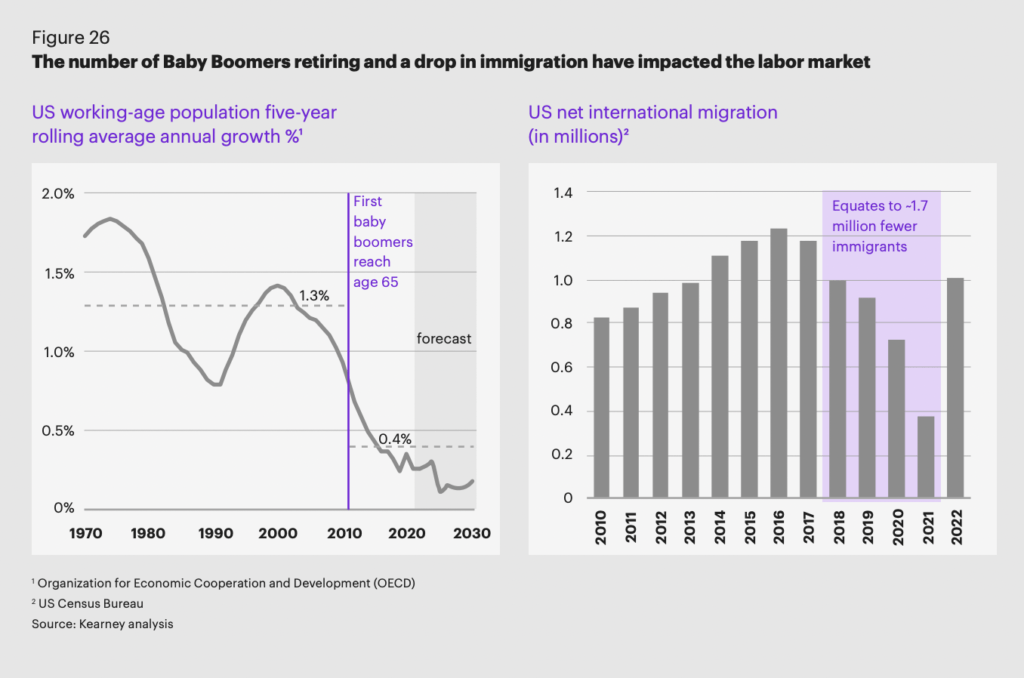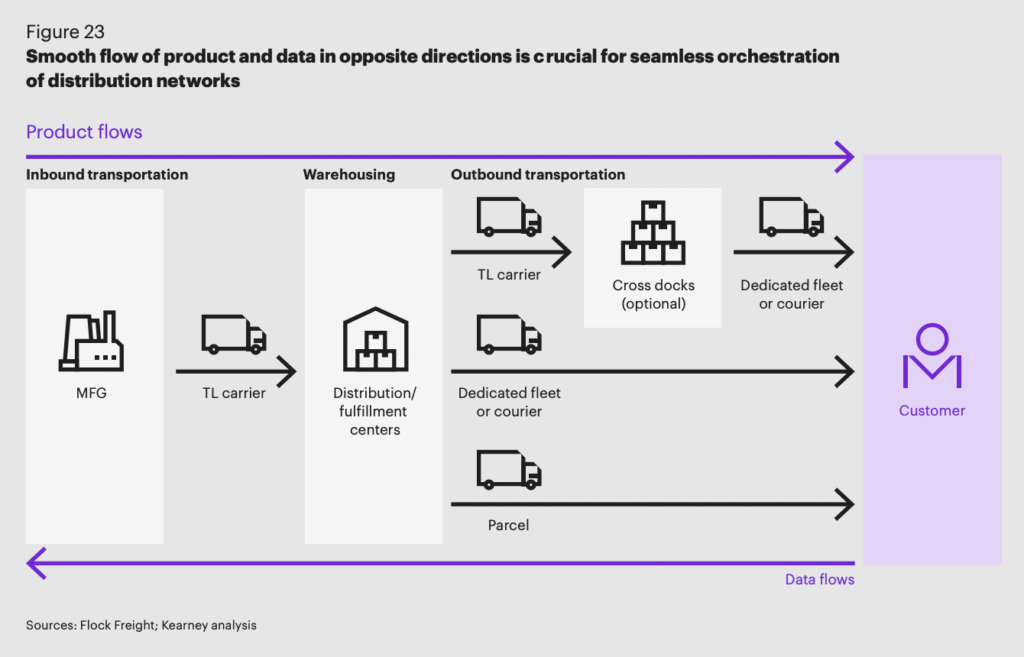13 Key Takeaways from State of Logistics 2023 Report
Written by
Kinga EdwardsPublished on

The logistics industry stands as a dynamic and complex field that continually evolves to meet the demands of global trade, technology, and consumer expectations. From the intricate networks that connect suppliers and consumers to the innovative technologies that drive efficiency and sustainability, logistics is a vital part of our modern economy.
The State of Logistics 2023 Report delves into this multifaceted industry, uncovering key trends, challenges, and opportunities that shape the present and future of logistics. This article presents 13 key takeaways from the report, providing insights and analysis that reflect the current state of the industry and offer a glimpse into what lies ahead.
1. Changing Shipper-Carrier Dynamics
The traditional annual bid is losing its prominence as shippers seek closer market engagement through mini-bids and frequent touchpoints. Carriers are shifting their focus towards reliability, visibility, and comprehensive service. This change in dynamics reflects a more collaborative and responsive relationship between shippers and carriers, adapting to the evolving needs of the market.

2. Rail’s Potential
Rail transport offers significant advantages, such as cost-effectiveness, environmental friendliness, and safety. However, a legacy culture emphasizing short-term gains has hindered growth. Competition among rail companies has also been a barrier. Fundamental changes and investments in customer-facing activities are essential for sustained growth in the rail sector.
3. Strategic Capability Building
The report urges shippers and carriers to build agility to respond to disruptions. Strategic thinking is seen as the path back to prosperity, emphasizing the need for proactive planning and flexibility. This approach aims to equip the logistics industry with the tools to navigate unexpected challenges and capitalize on emerging opportunities.
4. Warehouse Challenges and Future Perspectives
The post-pandemic era has brought challenges to the warehouse sector, including excess inventory, space limitations, and rising labor costs. The growth of the e-commerce market and strategic management may provide relief in 2023. Vacancy rates fell sharply in 2022, and rents increased, with a focus on resilience, sustainability, and technological advancements shaping the future of logistics. The sector must adapt to these challenges to maintain efficiency and meet the evolving demands of consumers.
5. Transformations and Challenges
The logistics industry faces transformations and challenges, including changing delivery requirements, consumer expectations, cyberattacks, climate-related disasters, and geopolitical disruptions. These factors are stressing trade and distribution networks, requiring innovative solutions and resilience to maintain smooth operations.
6. Labor and Wages
Warehousing jobs have grown, but labor remains scarce, leading to rising hourly costs. Companies are exploring open book contracts and outsourcing to address labor challenges. These strategies reflect a broader trend of innovation and adaptation in labor management within the logistics industry.

7. Sustainability Focus and Approaches
Regulations are compelling corporate action on sustainability, with international reach. Companies must track and report their environmental impacts across various scopes. Proven approaches like network optimization, asset-utilization efficiency, and digital technology are being used to improve sustainability. Initiatives like Walmart’s Project Gigaton are encouraging emission-cutting goals. This focus on sustainability reflects a growing recognition of the environmental responsibilities of the logistics sector and the need for compliance with global standards.
8. Third-Party Logistics (3PLs)
Shippers are increasingly relying on 3PLs for data management, visibility, and analytics. The 4PL market is becoming more concentrated among larger providers. This trend highlights the growing complexity of logistics operations and the value of specialized third-party services in managing and optimizing these processes.
9. Freight Forwarding Growth
The freight forwarding market is expected to grow to $90.7 billion by 2031. Comprehensive offerings are trending within the sector, reflecting the need for integrated and flexible solutions. This growth underscores the importance of freight forwarding in the global logistics landscape and the opportunities for expansion and innovation.

10. Motor and Road Freight Insights
Road freight saw little change in volume, and carrier margins were threatened by low rates and high resource costs. This stagnation reflects broader economic trends and challenges in the road freight sector. Strategic planning and innovation may be required to navigate these challenges and capitalize on future opportunities.
11. Emergent Innovations
Companies are investing in electric fleets, biofuel blends, and autonomous driving systems to reduce emissions and comply with sustainability targets. These innovations represent the cutting edge of technology in logistics, offering potential solutions to environmental challenges and setting the stage for a more sustainable future.
12. Space Dynamics
The increase in inventories has led to low warehouse vacancy rates and soaring rents. Companies are exploring alternatives like consolidation and repurposing of space. The future trends in prices and vacancy rates remain uncertain, reflecting the complex dynamics of supply and demand in the warehousing space.
13. Labor Scarcity in Logistics
With the lowest unemployment rate since 1969, attracting and retaining high-quality workers is a challenge. Companies are innovating in compensation, onboarding, scheduling, and technology to compete in the labor market. Machine learning and human input are being used to reduce attrition, and embracing innovation in labor competition can lead to a robust competitive advantage.
Conclusion
The logistics industry’s ever-changing nature demands constant vigilance, innovation, and strategic planning. As the State of Logistics 2023 Report illustrates, the sector is at a critical juncture, facing challenges and opportunities that will define its trajectory in the coming years.
In a world where change is the only constant, the logistics industry must continue to lead, innovate, and thrive, shaping a future that meets the needs of an interconnected and rapidly transforming global landscape.
***
Stay at the forefront of breaking news, cutting-edge trends, and exclusive interviews that will leave you breathless – seize the chance to join our extraordinary community today!

![Marketing in Europe in 2026: What's new and what hasn't changed? [McKinsey Report]](https://ecommercegermany.com/wp-content/uploads/2026/01/windows-w79mIrYKcK4-unsplash-720x480.jpg)
